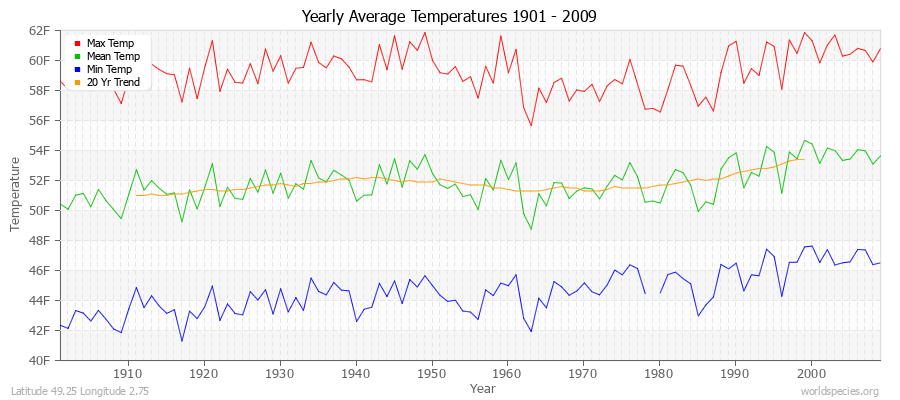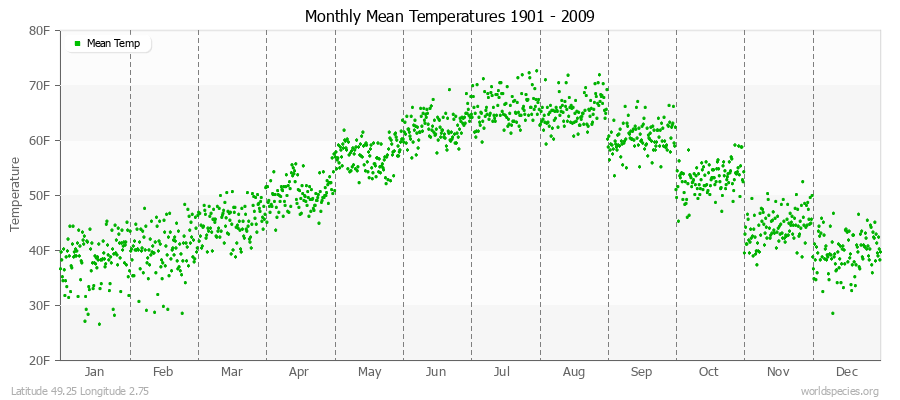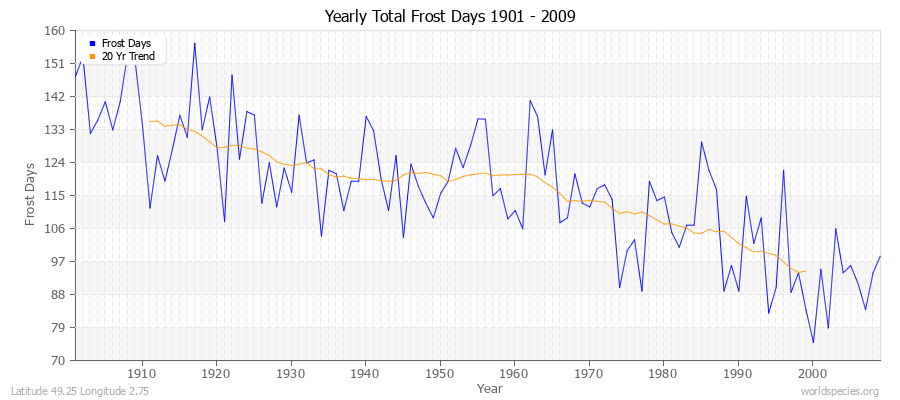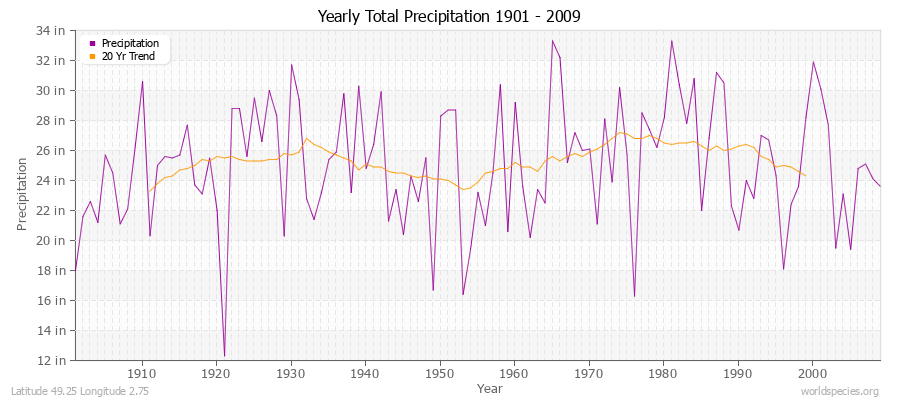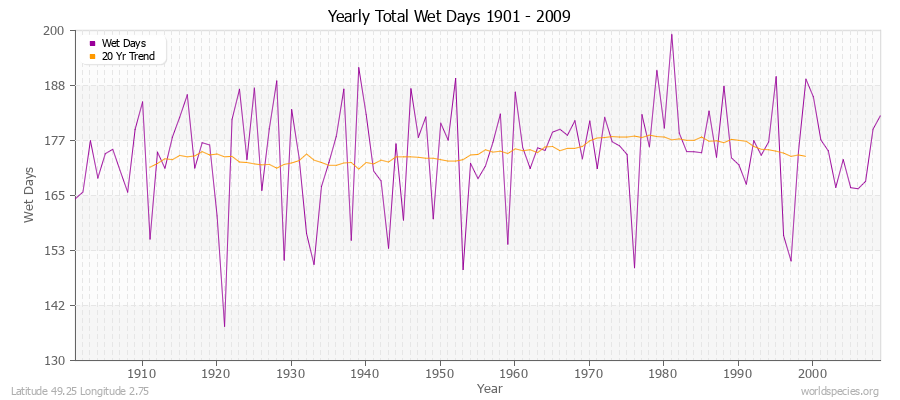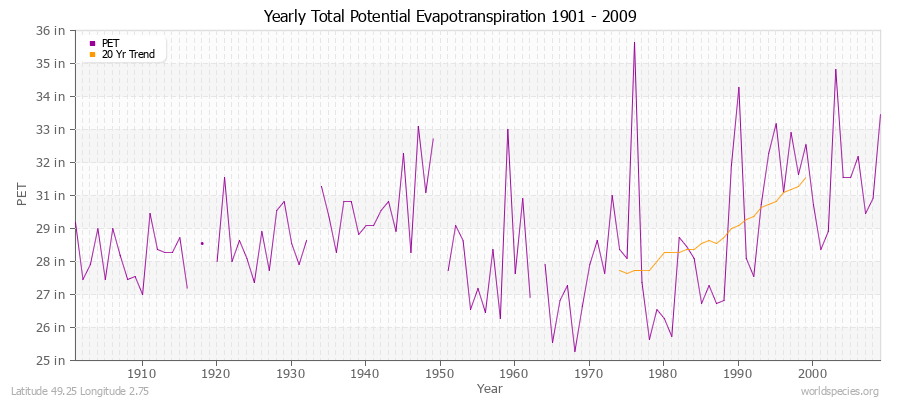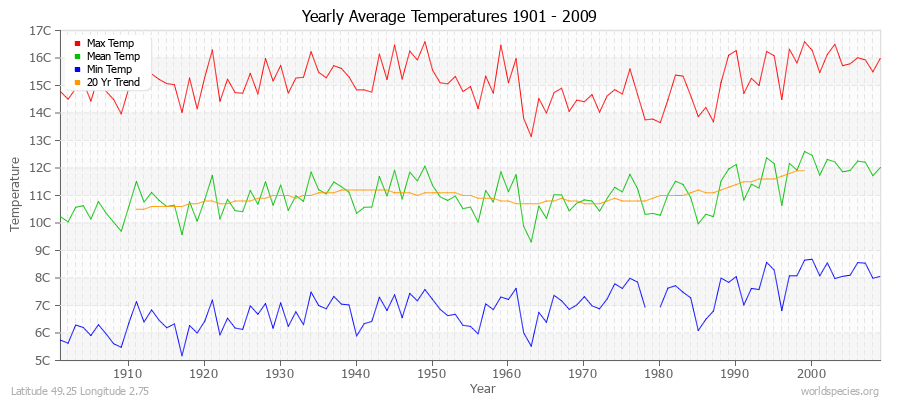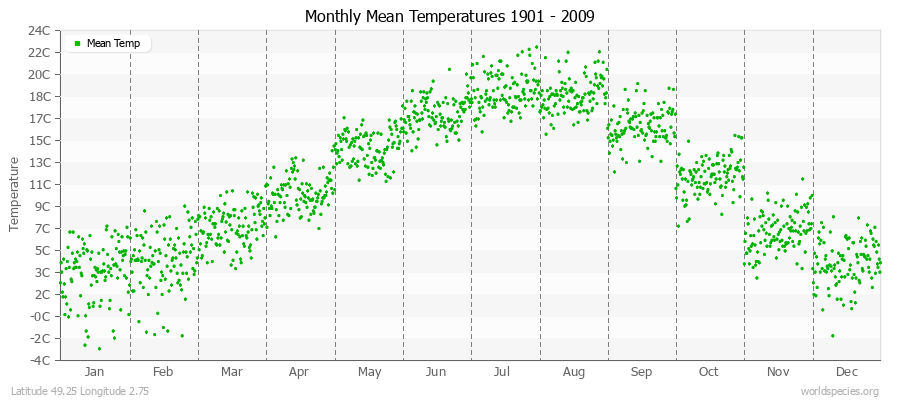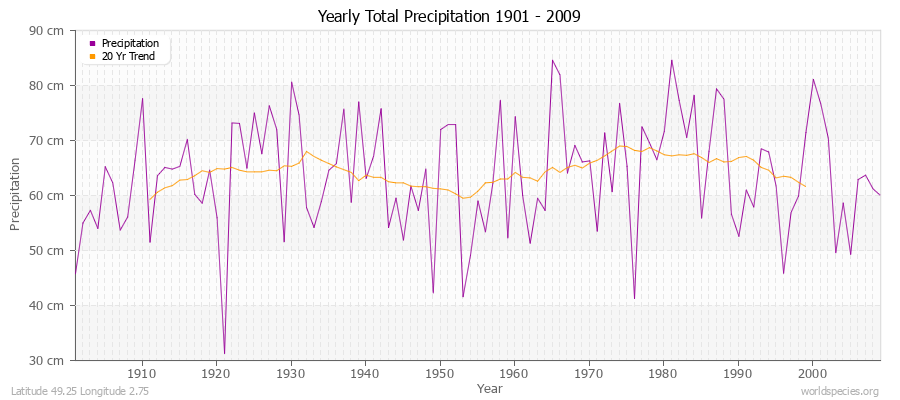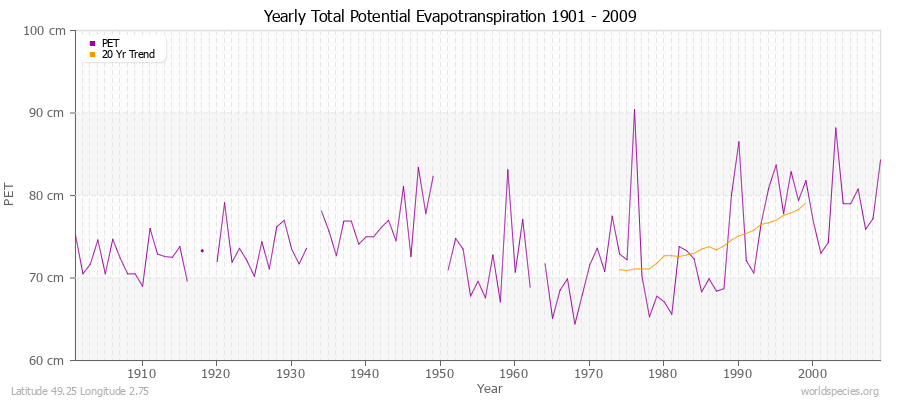Climate Data for Latitude 49.25 Longitude 2.75Köppen climate classification: Cfb (Climate: warm temperate; Precipitation: fully humid; Temperature: warm summer) Forêts picardes : Compiègne, Laigue, Ourscamp
Forêts picardes : Compiègne, Laigue, Ourscamps
Forêts picardes : massif des trois forêts et bois du roi
Forêts picardes : massif des Trois Forêts et bois du Roi
Marais de Sacy
|
Averages (Metric) English| Type | Units | Jan | Feb | Mar | Apr | May | Jun | Jul | Aug | Sep | Oct | Nov | Dec | Period |
|---|
| Min Temp | C° | 1.0 | 1.3 | 3.4 | 5.4 | 9.1 | 11.8 | 13.7 | 13.4 | 11.1 | 7.8 | 4.1 | 1.9 | 108 years | | Mean Temp | C° | 3.5 | 4.4 | 7.3 | 10.1 | 14.0 | 16.9 | 18.9 | 18.5 | 15.9 | 11.6 | 6.9 | 4.3 | 109 years | | Max Temp | C° | 6.0 | 7.6 | 11.3 | 14.9 | 19.0 | 22.1 | 24.1 | 23.7 | 20.7 | 15.5 | 9.8 | 6.7 | 109 years | | Frost | Days | 26.7 | 21.6 | 12.3 | 3.6 | 1.5 | 0.4 | 3.0 | 3.4 | 4.2 | 6.9 | 10.9 | 22.3 | 109 years | | Wet | Days | 18.1 | 14.4 | 16.3 | 14.5 | 15.9 | 12.4 | 11.5 | 11.0 | 11.9 | 14.7 | 16.7 | 16.5 | 109 years | | Precipitation | mm | 52.0 | 44.3 | 45.6 | 47.1 | 56.1 | 54.2 | 58.8 | 55.3 | 52.0 | 57.4 | 57.6 | 56.9 | 109 years | | Potential Evapotranspiration | mm | 14.1 | 24.0 | 49.4 | 74.1 | 97.5 | 111.9 | 121.2 | 105.9 | 71.9 | 39.6 | 18.3 | 13.2 | 104 years |
Averages (English) Metric| Type | Units | Jan | Feb | Mar | Apr | May | Jun | Jul | Aug | Sep | Oct | Nov | Dec | Period |
|---|
| Min Temp | F° | 33.8 | 34.3 | 38.0 | 41.7 | 48.4 | 53.2 | 56.7 | 56.1 | 52.0 | 46.0 | 39.3 | 35.4 | 108 years | | Mean Temp | F° | 38.3 | 39.9 | 45.2 | 50.2 | 57.2 | 62.5 | 66.0 | 65.4 | 60.6 | 52.9 | 44.5 | 39.7 | 109 years | | Max Temp | F° | 42.8 | 45.6 | 52.4 | 58.9 | 66.2 | 71.8 | 75.4 | 74.7 | 69.3 | 60.0 | 49.7 | 44.1 | 109 years | | Frost | Days | 26.7 | 21.6 | 12.3 | 3.6 | 1.5 | 0.4 | 3.0 | 3.4 | 4.2 | 6.9 | 10.9 | 22.3 | 109 years | | Wet | Days | 18.1 | 14.4 | 16.3 | 14.5 | 15.9 | 12.4 | 11.5 | 11.0 | 11.9 | 14.7 | 16.7 | 16.5 | 109 years | | Precipitation | in | 2.0 | 1.7 | 1.8 | 1.9 | 2.2 | 2.1 | 2.3 | 2.2 | 2.0 | 2.3 | 2.3 | 2.2 | 109 years | | Potential Evapotranspiration | in | 0.6 | 0.9 | 1.9 | 2.9 | 3.8 | 4.4 | 4.8 | 4.2 | 2.8 | 1.6 | 0.7 | 0.5 | 104 years |
Climate data provided by CRU TS 3.1 - University of East Anglia Climate Research Unit (CRU). [Phil Jones, Ian Harris]. CRU Time Series (TS) high resolution gridded datasets, [Internet]. NCAS British Atmospheric Data Centre, 2008, Accessed: 28-July-2011 Charting software provided by pChart - a PHP class to build charts. The calculation method for the potential evapotranspiration is the FAO grass reference equation (Ekstrom et al., 2007, which is based on Allen et al., 1994).
It is a variant of the Penman Monteith method using TMP, TMN, TMX, VAP, CLD.
|
